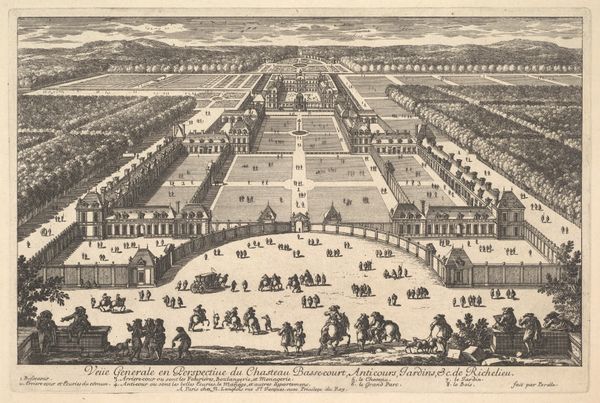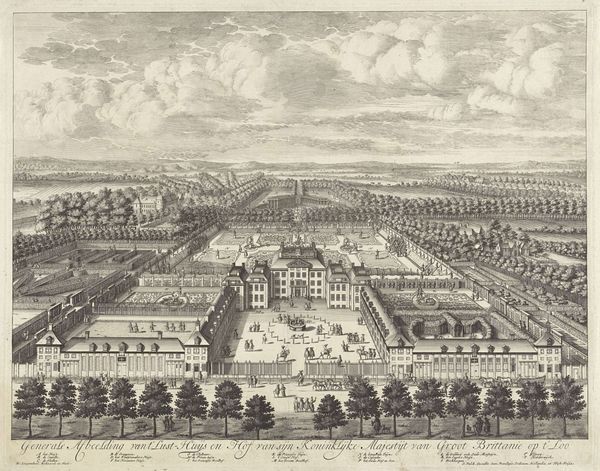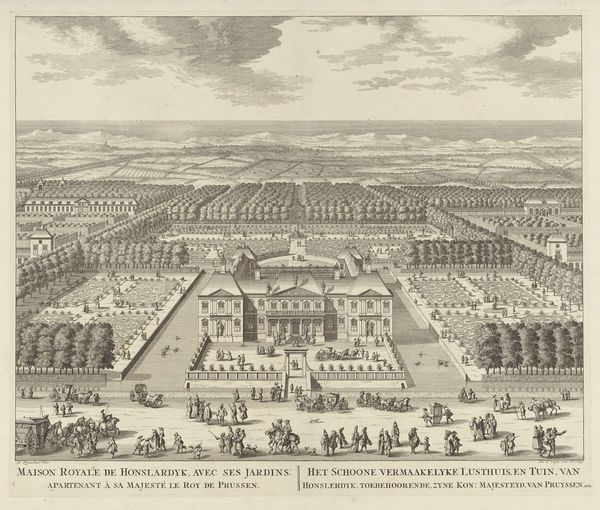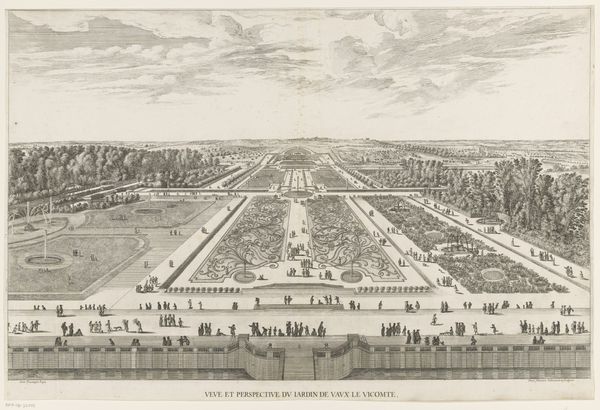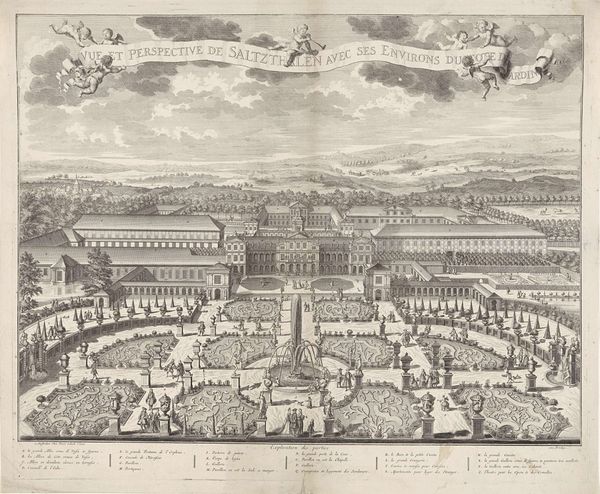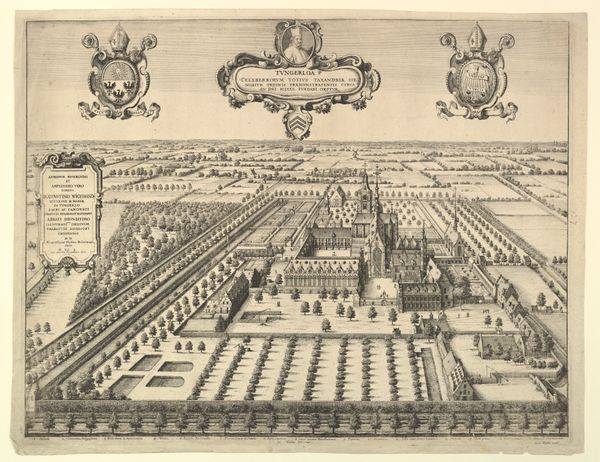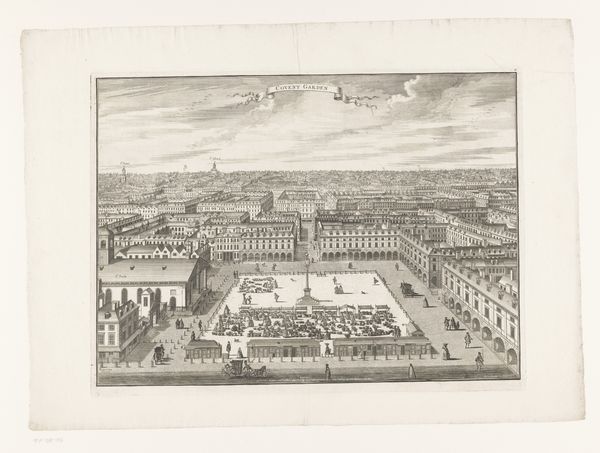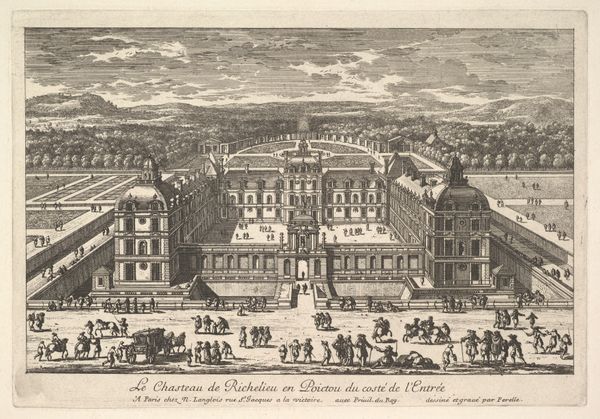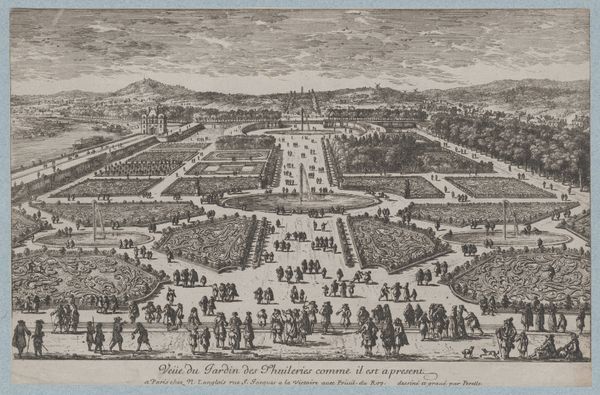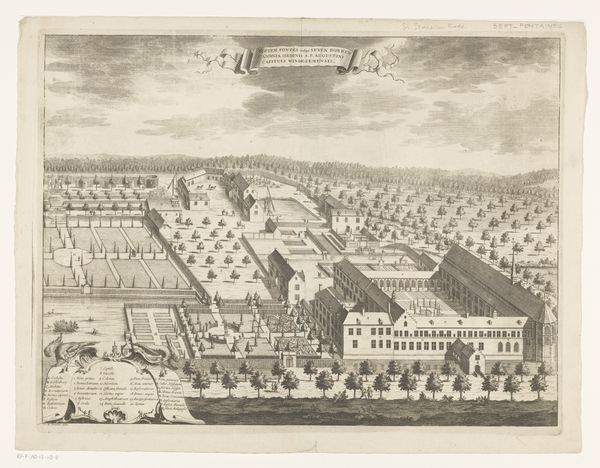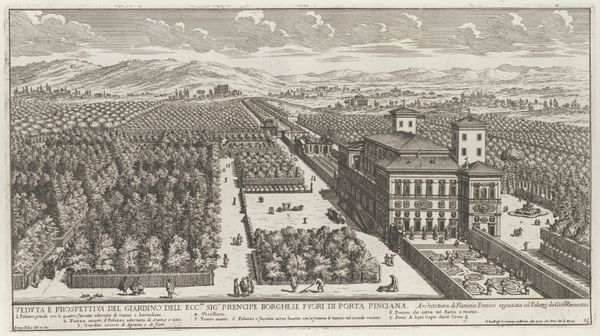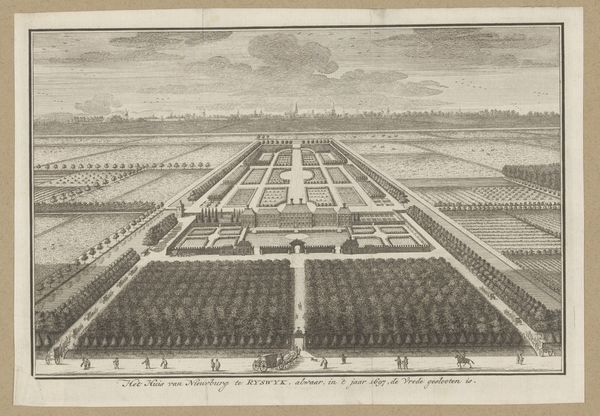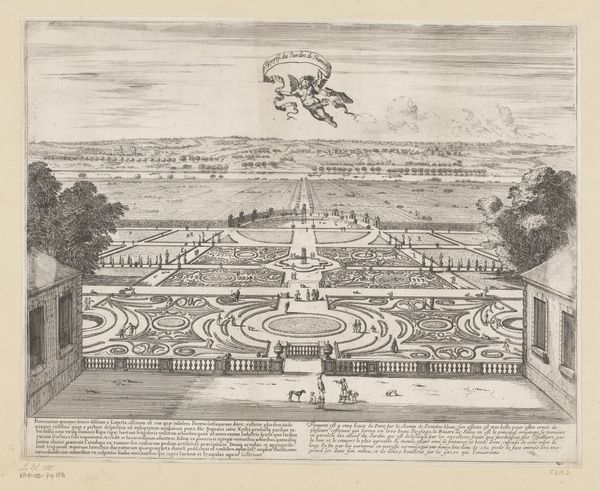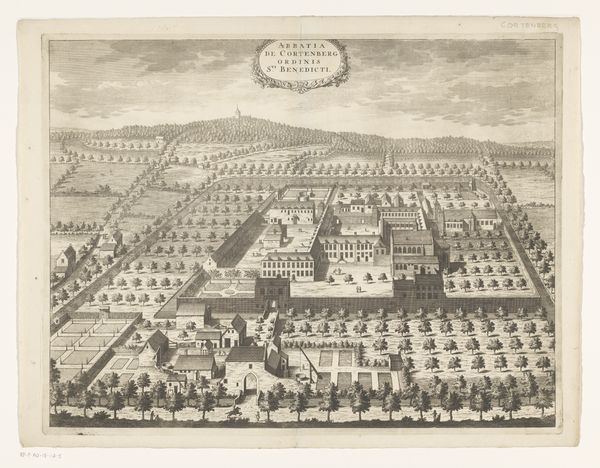
print, engraving, architecture
#
baroque
# print
#
landscape
#
cityscape
#
engraving
#
architecture
Dimensions: height 410 mm, width 491 mm
Copyright: Rijks Museum: Open Domain
Curator: Well, isn't this enchanting? We're looking at "Gezicht op het Huis De Voorst te Eefde," created sometime between 1697 and 1718 by Daniël Stopendaal. What leaps out at you? Editor: My initial reaction is...power. An immense, organized landscape designed to impress. All those neatly arranged plots – almost feels suffocatingly controlled. What’s this obsession with the garden layout being such a public display? Curator: It speaks volumes, doesn't it? Stopendaal masterfully captured the Baroque spirit. Note the architecture--crisp lines made possible by way of an engraving. An obsessive amount of labour went into detailing every tree, shrub and stone. The precision with which these gardens and buildings are laid out reflects not only wealth but also a desire to control nature itself, bending it to one’s will. Editor: Exactly. I'm thinking about the societal cost involved to sustain this perfectly manicured paradise and the resources extracted to do it. This wasn’t just Stopendaal with a burin. What type of metal did he use? Who made that burin? Curator: Always down to the nitty-gritty, aren’t we? The sheer detail of this landscape, meticulously rendered through engraving, hints at a meditative practice. To labor over the copperplate, painstakingly etching each line...it must've felt like stepping into the scene itself. Stopendaal perhaps sought not merely to replicate but to embody the serene order he depicted. Editor: Right, Stopendaal probably understood what those perfect gardens meant socially, culturally, even politically! Every print would reinforce it with wealthy clients showing them to all of their friends, who may seek to acquire property for their families to display like this family does with the gardens. And they were all consuming those burins! I wonder if the tradesmen even signed those? Curator: I like the notion of him being keenly aware of this, but in this particular moment perhaps finding artistic peace within it nonetheless. He’s sort of, participating and commenting on its social context while also dreaming a bit himself! It gives the print a kind of delicious tension, don’t you think? Editor: I think I agree with you, and maybe that little sliver of hope and imagination, amidst this grand display of human and ecological control, makes it art. Curator: Beautifully said. It does make you wonder, doesn't it, about all those other hands involved—seen and unseen—in bringing this vision to life.
Comments
No comments
Be the first to comment and join the conversation on the ultimate creative platform.
